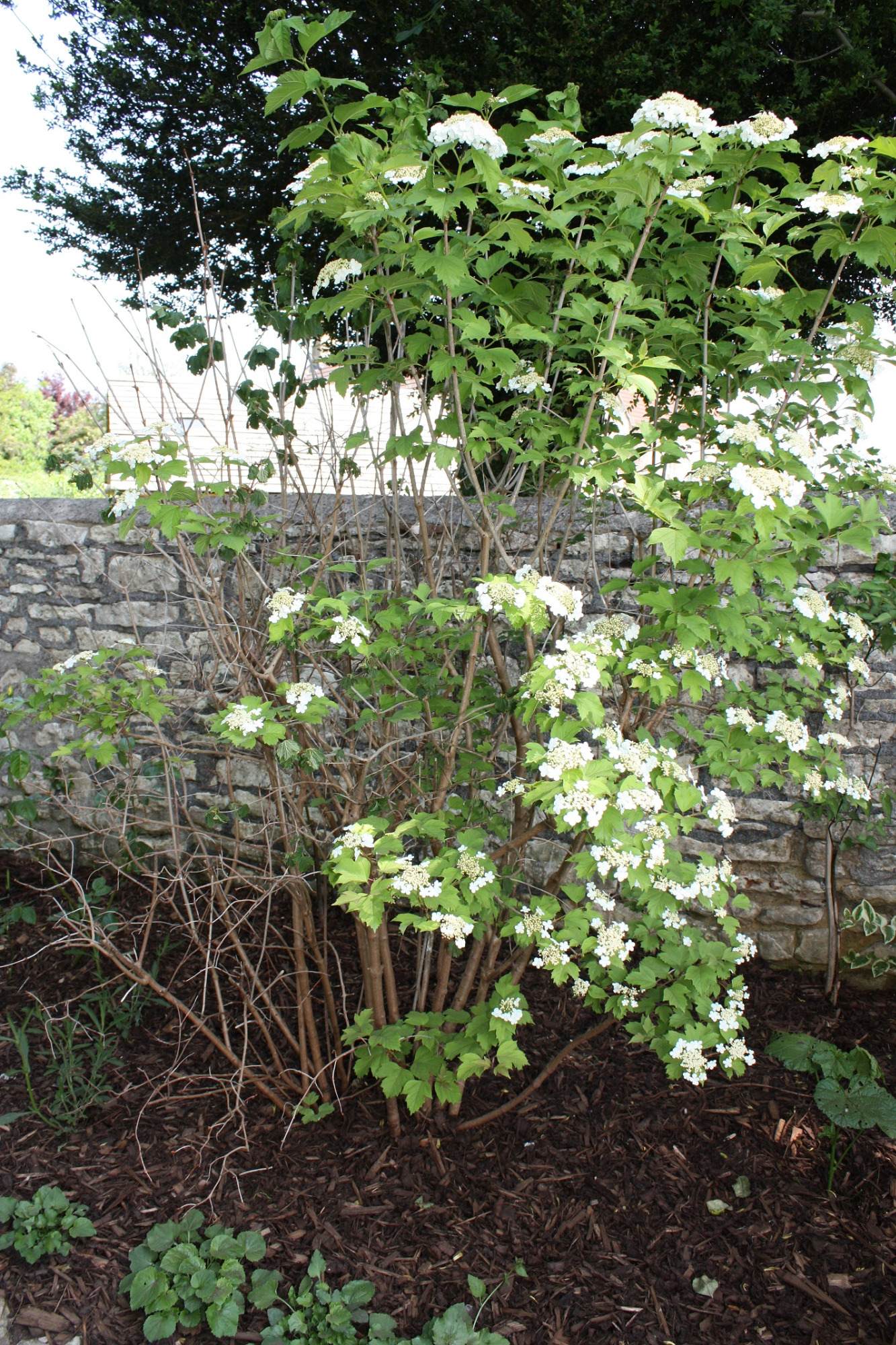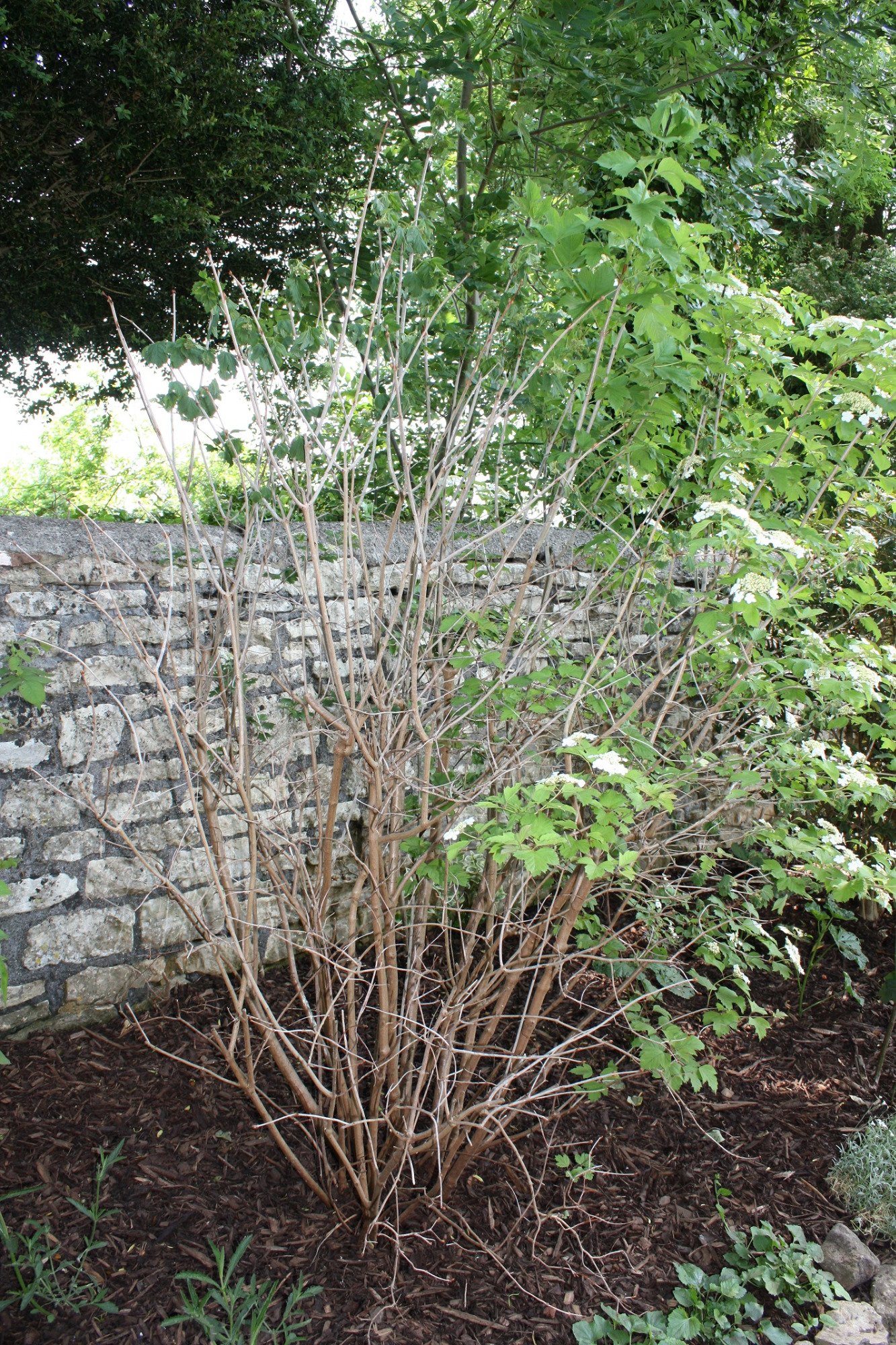This Forum will close on Wednesday 27 March, 2024. Please refer to the announcement on the Discussions page for further detail.
What is it and how can I help it?
I have the pictured deciduous shrub in partial shade on my driveway. I have no idea what it is but this year, it appears as though half of it has died whilst the other half is either thriving or dying!
This area of driveway has been neglected for a few years but I cleared it a few weeks back and probably hacked through a few of it's roots whilst doing so. I guess that's part of the problem. I was thinking about cutting back all of the bare stems and those with shrivelling leaves to ground level. Is that the right thing to do? I was also thinking to reduce the height of the remaining shrub by about a third once it has stopped flowering.
Any thoughts and an ID for the shrub would be greatly appreciated!


0
Posts
It looks like viburnum opus and I've pinched this from the RHS site.
1. Early flowering evergreen shrubs (Pruning group 8)
Timing: Prune immediately after flowering.
Examples: Berberis, box (Buxus), Camellia, Ceanothus, Choisya, Daphne, Hypericum, Mahonia, Pieris, Azalea (Rhododendron), Rhododendron, Viburnum tinus.
Pruning: Winter, spring and early summer-flowering evergreens such as Rhododendron and Camellia are best left unpruned except for removal of unsightly shoots and deadheading, unless some shaping is required. Do this by lightly cutting back shoots after flowering. Deadheading and removal of dead, damaged and diseased growth can be done at the same time.
Exceptions: Certain evergreen shrubs require a harder prune to increase flowering or to maintain their attractive shape. Examples include groundcover such as Mahonia aquifolium and Hypericum calycinum which look best sheared over in spring. Deciduous Viburnum also fall within pruning group 8.
Hope this helps.
Wow, that was quick. Thanks PP, spot on with the ID. I guess I'll have to make a few cuttings as a back up and then give it a chop after flowering is over and see if it survives....
Viburnum opulus is deciduous.
This will take any amount of hacking back, I usually do mine in winter.
Now, I'd remove anything that's dead or nearly dead, right to base. If it has lost roots it would help if you reduced some of the top growth as well. You could leave it with the OK bits on the lower right. Unless you've killed it by hacking its roots it will survive the prune
In the sticks near Peterborough
Thanks Nut. Short back and sides it is then. Fingers crossed as what's left looks quite nice.
I think it will be OK in the long term
In the sticks near Peterborough